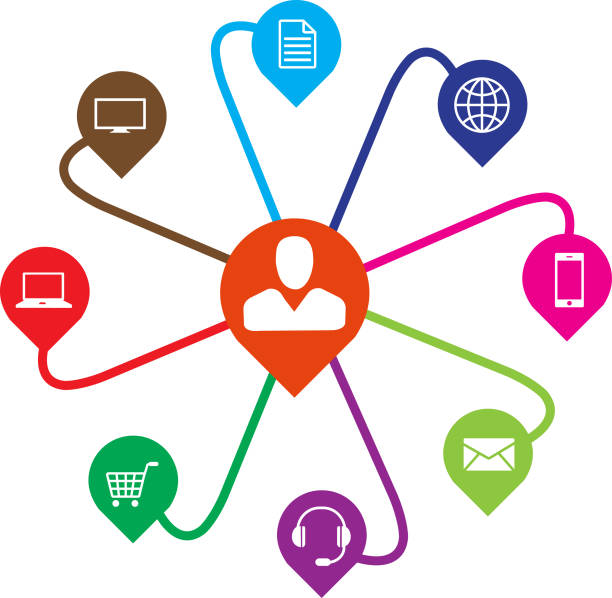
In today’s fast-paced digital world, consumer behavior has evolved significantly. Gone are the days when shoppers relied solely on physical stores to make purchases. With advancements in technology, the rise of e-commerce, and the proliferation of social media platforms, consumers now demand a seamless shopping experience across multiple touchpoints. This demand has given birth to a game-changing approach in retail known as omnichannel retail.
Omnichannel retail is more than just a buzzword—it’s a strategic framework that integrates various sales and marketing channels to provide a unified and cohesive customer experience. In this blog, we’ll dive into why omnichannel retail is essential, how it benefits both businesses and consumers, and why it should be a priority for any modern retailer.
What is Omnichannel Retail?
At its core, omnichannel retail refers to a fully integrated approach to commerce that unifies physical stores, e-commerce platforms, mobile applications, social media, and other sales channels. The goal is to ensure that customers have a consistent and personalized shopping experience, regardless of how or where they interact with a brand.
For instance, a customer might browse a product on a retailer’s mobile app, purchase it online, and pick it up in-store. Alternatively, they might discover a product on social media, visit the brand’s website to learn more, and then make a purchase in a physical store. In an omnichannel strategy, all these interactions are interconnected, creating a seamless and efficient journey for the customer.
Why is Omnichannel Retail Important?
1. Improved Customer Experience
Modern consumers expect convenience and consistency. With omnichannel retail, businesses can meet these expectations by offering a unified experience. Whether a customer is shopping online, in-store, or through a mobile app, they should encounter the same level of service, branding, and product availability. This consistency builds trust and encourages repeat purchases.
2. Increased Customer Loyalty
A seamless shopping experience fosters loyalty. When customers can easily transition between channels without any hiccups, they’re more likely to stick with a brand. Omnichannel strategies also enable personalized marketing, which strengthens customer relationships. For example, sending tailored product recommendations based on past purchases can make customers feel valued and understood.
3. Better Data Insights
Omnichannel retail allows businesses to gather data from multiple touchpoints, providing a comprehensive view of customer behavior. By analyzing this data, retailers can identify trends, preferences, and pain points, enabling them to make informed decisions and refine their strategies.
4. Higher Sales and Revenue
Omnichannel customers are often more valuable than single-channel customers. Studies show that shoppers who engage with a brand across multiple channels tend to spend more. By providing multiple avenues for interaction and purchase, retailers can tap into a larger market and boost their revenue.
5. Adaptability to Consumer Trends
The retail landscape is constantly evolving, and consumer preferences are shifting rapidly. An omnichannel approach allows businesses to adapt quickly to these changes, ensuring they remain relevant and competitive.
6. Enhanced Brand Visibility
Being present on multiple platforms increases a brand’s visibility. Whether it’s through social media ads, email campaigns, or physical stores, an omnichannel strategy ensures that customers encounter the brand wherever they go. This widespread presence reinforces brand recognition and keeps the business top of mind.
How to Implement an Effective Omnichannel Retail Strategy
Adopting an omnichannel approach may seem daunting, but with careful planning, it can yield significant rewards. Here are some steps to get started:
1. Understand Your Audience
Begin by identifying your target audience and understanding their preferences, behaviors, and shopping habits. Use analytics tools to gather insights and segment your customers based on their interactions with your brand.
2. Integrate Technology
Invest in technologies that facilitate seamless integration between channels. Customer relationship management (CRM) software, inventory management systems, and unified commerce platforms are essential for synchronizing data and ensuring a consistent experience.
3. Optimize Mobile Channels
With the rise of mobile commerce, ensuring that your website and apps are mobile-friendly is crucial. Fast-loading pages, intuitive navigation, and secure payment options are non-negotiables.
4. Leverage Social Media
Social media is a powerful tool for reaching customers and driving engagement. Use platforms like Instagram, Facebook, and TikTok to showcase products, run targeted ads, and provide customer support.
5. Provide Multiple Fulfillment Options
Customers appreciate flexibility. Offer options like in-store pickup, curbside delivery, and easy returns to enhance the shopping experience.
6. Focus on Personalization
Use data to personalize your interactions with customers. From tailored email campaigns to product recommendations, personalization can significantly enhance customer satisfaction.
7. Ensure Consistent Branding
Maintain consistent branding across all channels, including physical stores, websites, apps, and social media. This creates a cohesive and professional image that resonates with customers.
Challenges of Omnichannel Retail
While the benefits of omnichannel retail are undeniable, implementing this strategy is not without its challenges. Some common obstacles include:
- Data Silos: Integrating data from multiple channels can be complex, especially if systems are not interconnected.
- High Implementation Costs: Setting up the necessary infrastructure and technology requires a significant investment.
- Staff Training: Employees need to be trained to manage and deliver a consistent experience across all channels.
- Maintaining Consistency: Ensuring a uniform experience across channels can be difficult, especially for larger organizations.
Despite these challenges, the rewards of omnichannel retail far outweigh the hurdles.
Conclusion
Omnichannel retail is no longer a luxury—it’s a necessity in today’s competitive market. By offering a seamless, consistent, and personalized experience across all touchpoints, businesses can build stronger relationships with their customers, boost loyalty, and drive higher sales.
At TechAfri, we understand the transformative power of omnichannel retail and its role in shaping the future of commerce. As technology continues to evolve, staying ahead of consumer expectations will be key to success.
Want to learn more about how technology is revolutionizing the retail industry? Stay tuned for our next article on “” Don’t miss it—it’s packed with insights to help you stay competitive in the ever-evolving tech landscape.
For more updates and expert tips, visit TechAfri. Let’s shape the future of retail together!

